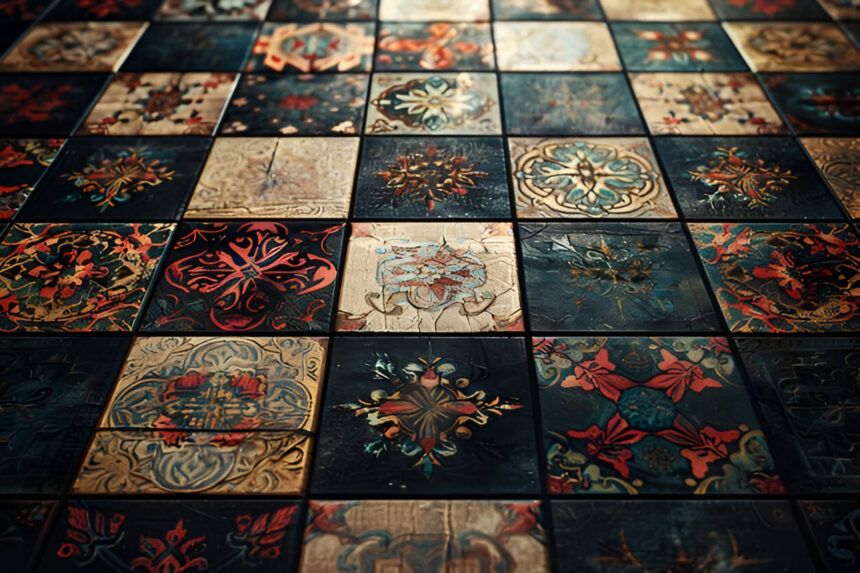Carpet tiles, also known as carpet squares or modular carpet, are a versatile and stylish flooring option that has gained popularity in both residential and commercial settings. These small pieces of carpet come in various sizes, colors, patterns, and textures, making them a practical and customizable choice for a wide range of spaces. In this comprehensive guide, we will explore the benefits, installation process, maintenance tips, and design possibilities of carpet tiles.
Benefits of Carpet Tiles
1. Versatility:
One of the main advantages of carpet tiles is their versatility. They can be used to create unique patterns and designs by mixing and matching different colors and textures. This flexibility allows for endless creative possibilities, making it easy to customize the flooring to suit any décor style or space.
2. Easy Installation:
Installing carpet tiles is a straightforward process that can be completed without professional help. Most carpet tiles come with a peel-and-stick adhesive backing, eliminating the need for glue or specialized tools. This makes it a convenient and cost-effective option for DIY enthusiasts or those looking to save on installation costs.
3. Durability:
Carpet tiles are known for their durability and resilience. They are designed to withstand heavy foot traffic and are resistant to stains, spills, and wear and tear. Additionally, if a tile gets damaged or stained, it can be easily replaced without having to replace the entire floor, making maintenance a breeze.
4. Eco-Friendly:
Many carpet tiles are made from recycled materials, making them a sustainable and eco-friendly flooring option. By choosing carpet tiles, you can reduce your carbon footprint and contribute to a more environmentally friendly living or working space.
Installation Process
Installing carpet tiles is a simple and hassle-free process that can be completed in a few easy steps:
- Preparation: Ensure that the subfloor is clean, dry, and flat before starting the installation process. Remove any existing flooring or debris that may interfere with the tiles’ adhesion.
- Layout: Plan the layout of the carpet tiles by determining the starting point and direction of installation. Consider the pattern, design, and orientation of the tiles for the best visual impact.
- Adhesive Application: Peel off the backing of the adhesive on the carpet tile and firmly press it onto the subfloor, starting from the predetermined starting point. Repeat this process for each tile, making sure to align them correctly for a seamless finish.
- Trimming: Use a utility knife to trim the edges of the tiles to fit the perimeter of the room or around obstacles such as corners or doorways. This step will ensure a clean and professional-looking installation.
- Finishing Touches: Once all the tiles are in place, use a heavy roller to press them firmly onto the subfloor and activate the adhesive. This will help secure the tiles in position and ensure a strong bond.
Maintenance Tips
Proper maintenance is essential to keep your carpet tiles looking fresh and extend their lifespan. Here are some tips to help you care for your carpet tiles:
- Regular Vacuuming: Vacuum your carpet tiles regularly to remove dirt, dust, and debris that can accumulate over time. This will prevent the buildup of allergens and maintain the appearance of the flooring.
- Spot Cleaning: Attend to spills and stains promptly by blotting them with a clean cloth or paper towel. Avoid rubbing the stain, as this can spread it further. Use a mild detergent or carpet cleaner to treat stubborn stains.
- Rotation: To prevent uneven wear, rotate the carpet tiles in high-traffic areas periodically. This will distribute the foot traffic more evenly and prolong the life of the flooring.
- Professional Cleaning: Consider hiring a professional carpet cleaning service to deep clean your carpet tiles annually. Professional cleaning will help remove deep-seated dirt and grime, restoring the carpet’s appearance and freshness.
Design Possibilities
Carpet tiles offer endless design possibilities for those looking to create a unique and personalized space. Here are some ideas to inspire your next flooring project:
- Geometric Patterns: Experiment with geometric patterns and shapes by mixing and matching different colored tiles to create a striking visual effect.
- Color Blocking: Create a bold statement by using contrasting colors to create a color-blocked design. This technique can add depth and dimension to the space.
- Gradient Effect: Use tiles in varying shades of the same color to create a subtle gradient effect that adds interest and sophistication to the room.
- Custom Logos or Designs: For commercial spaces, consider using carpet tiles to create custom logos or designs that reflect the brand’s identity and aesthetic.
Conclusion
Carpet tiles offer a versatile, durable, and eco-friendly flooring solution that is suitable for a wide range of applications. Whether you are looking to revamp your home or update your office space, carpet tiles provide a practical and stylish option that allows for endless design possibilities. With easy installation, low maintenance requirements, and a wide variety of colors and patterns to choose from, carpet tiles are a smart choice for anyone seeking a modern and customizable flooring solution. Embrace the versatility and style of carpet tiles to transform your space into a functional and beautiful environment.





